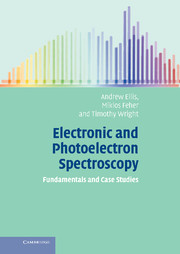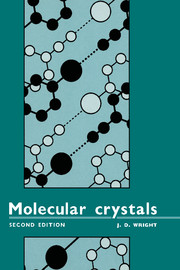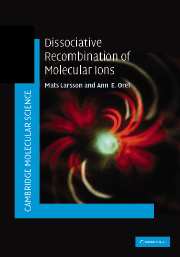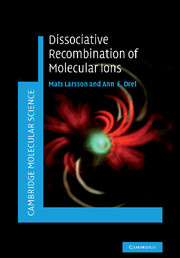Electronic and Photoelectron Spectroscopy
Electronic and photoelectron spectroscopy can provide extraordinarily detailed information on the properties of molecules and are in widespread use in the physical and chemical sciences. Applications extend beyond spectroscopy into important areas such as chemical dynamics, kinetics and atmospheric chemistry. This book aims to provide the reader with a firm grounding of the basic principles and experimental techniques employed. The extensive use of case studies effectively illustrates how spectra are assigned and how information can be extracted, communicating the matter in a compelling and instructive manner. Topics covered include laser-induced fluorescence, resonance-enhanced multiphoton ionization, cavity ringdown and ZEKE spectroscopy. The volume is for advanced undergraduate and graduate students taking courses in spectroscopy and will also be useful to anyone encountering electronic and/or photoelectron spectroscopy during their research.
- Describes the theory and experimental techniques behind electronic and photoelectron spectroscopy
- Extensive use of case studies allows the reader to follow the reasoning employed in the assignment of molecular spectra and how the information is extracted from the spectrum
- Describes spectroscopic techniques
Reviews & endorsements
Review of the hardback: '… this book is a light, readable and valuable introduction to the detailed and exciting world of electronic and photoelectron spectroscopy.' Chemistry World
Review of the hardback: 'This book is not only a useful book for a reasonable price, it is a very good book for graduate students in physical chemistry and all those who want to be introduced in modern spectroscopic techniques, and the results which may be obtained by these techniques. This book is a very helpful introduction into modern spectroscopy which guides the reader properly from the basic concepts to advanced principles. The book can be recommended not only for graduate students but also for all those who are engaging in teaching spectroscopy.' Zeitschrift für Physikalische Chemie
Product details
January 2005Hardback
9780521817370
302 pages
254 × 174 × 21 mm
0.76kg
Available
Table of Contents
- Preface
- List of journal abbreviations
- Part I. Foundations of Electronic and Photoelectron Spectroscopy:
- 1 Introduction
- 2. Electronic structure
- 3. Angular momentum in spectroscopy
- 4. Classification of electronic states
- 5. Molecular vibrations
- 6. Molecular rotations
- 7. Transition probabilities
- Part II. Experimental Techniques:
- 8. The sample
- 9. Broadening of spectroscopic lines
- 10. Lasers
- 11. Optical spectroscopy
- 12. Photoelectron spectroscopy
- Part III. Case Studies:
- 13. Ultraviolet photoelectron spectrum of CO
- 14. Photoelectron spectra of CO2, OCS, and CS2 in a molecular beam
- 15. Photoelectron spectrum of NO2−
- 16. Laser-induced fluorescence spectroscopy of C3: rotational structure in the 300 nm system
- 17. Photoionization spectrum of diphenylamine: an unusual illustration of the Franck–Condon principle
- 18. Vibrational structure in the electronic spectrum of 1,4-benzodioxan: assignment of low frequency modes
- 19. Vibrationally resolved ultraviolet spectroscopy of propynal
- 20. Rotationally resolved laser excitation spectrum of propynal
- 21. ZEKE spectroscopy of Al(H2O) and Al(D2O)
- 22. Rotationally resolved electronic spectroscopy of the NO free radical
- 23. Vibrationally resolved spectroscopy of Mg+–rare gas complexes
- 24. Rotationally resolved spectroscopy of Mg+–rare gas complexes
- 25. Vibronic coupling in benzene
- 26. REMPI spectroscopy of chlorobenzene
- 27. Spectroscopy of the chlorobenzene cation
- 28. Cavity ringdown spectroscopy of the a1∆←X3∑g− transition in O2
- Appendices
- Index.





